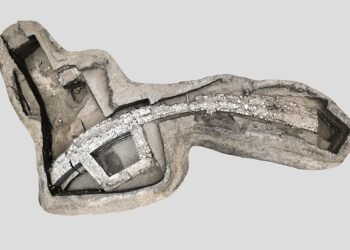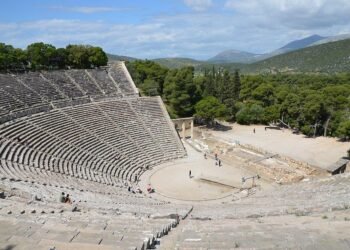In a historic endeavor, the International Space Station (ISS) has become the stage for a pioneering archaeological study, marking a first-of-its-kind exploration of a space habitat.

Led by Associate Professor Alice Gorman from Flinders University and Associate Professor Justin Walsh of Chapman University in California, the International Space Station Archaeological Project (ISSAP) seeks to comprehend the human relationship with items in their space environment, offering a unique glimpse into how people adapt their behavior to an entirely novel setting.
The inaugural project, known as the Sampling Quadrangle Assemblages Research Experiment (SQuARE), has officially commenced. SQuARE creatively applies a fundamental archaeological technique used on Earth to the confines of space—the test pit.
While traditional archaeologists on Earth excavate one-meter squares to gain insights into a site and plan further investigations, the ISSAP team will employ adhesive tape to define one-meter areas within the International Space Station. Subsequently, they will utilize daily photographs to analyze how these spaces are utilized and how they evolve over time.
Associate Professor Gorman explains the novel approach: “Instead of digging them to reveal new layers of soil representing different moments in the site’s history, we will have them photographed each day to identify how they’re being used and how they change over time.”
The experiment was initiated by NASA astronaut Kayla Barron, who placed squares in several locations within the ISS, symbolizing work and leisure areas such as a galley table, workstation, EXPRESS racks, and the wall opposite the latrine.
Additionally, the ISS crew contributed by selecting an additional location for study, based on their assessment of what would be intriguing to document. This square was placed on one of the racks in the US laboratory module, Destiny.
The daily photography phase of the experiment is currently underway and will span a duration of 60 days. Associate Professor Walsh reflects on the significance of this pioneering project, stating, “We’re the first to try to understand how humans relate to the items they live with in space.”
By introducing archaeological perspectives to an active space environment, ISSAP aims to illuminate the ways in which people adapt to and interact with an entirely new habitat.
This groundbreaking endeavor holds great promise for shedding light on the cultural, behavioral, and functional aspects of human life in space, offering a new dimension to our understanding of space exploration and habitation.

























